In early 2025, OpenAI introduced Operator, an AI agent designed to automate online tasks on behalf of users. Google, Anthropic, and others aren’t far behind, signaling the start of a new wave in applied AI. With over 80% of organizations expected to adopt this tech in the next few years, the shift is moving fast.
So, is this just hype? Or are AI agents changing how things get done? And in a field like healthcare, where accuracy and trust matter more than speed, what role do they play?
In this article, we break down what AI agents are, how they work, and what specific tasks AI agents can automate in healthcare.
What Are AI Agents in Healthcare?
AI agents in healthcare are autonomous systems built to carry out well-defined tasks – without human intervention in the loop. They monitor input from their environment (like patient data, system events, or user interactions), process it using logic or learned models, and take appropriate action. That might involve flagging a risk, completing a workflow step, or responding to a user in real-time.
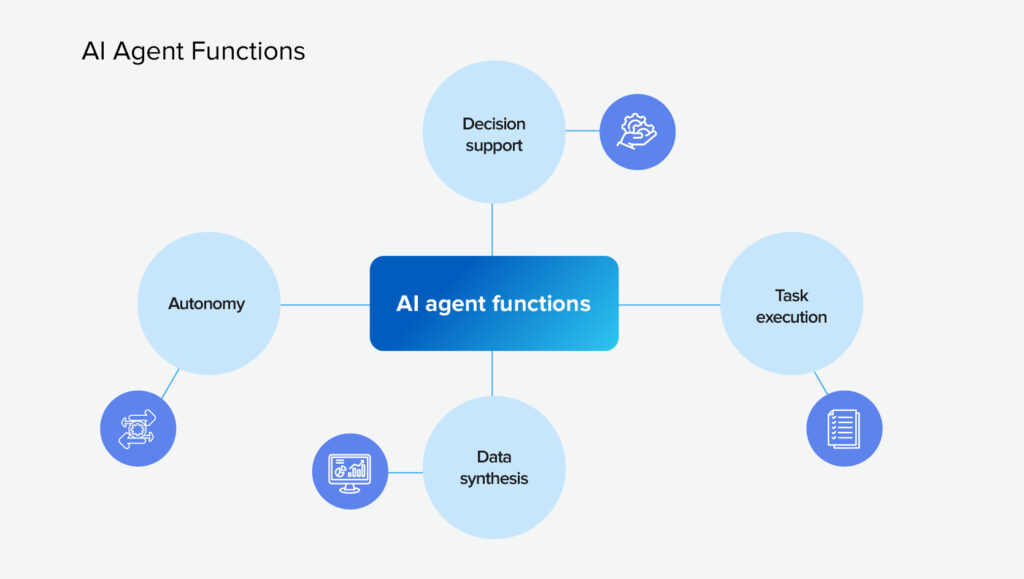
Most agents fall into one of three categories:
- Conversational agents, such as chatbots or virtual assistants, interact with patients or staff to answer questions, guide next steps, or collect structured data.
- Automation agents that handle back-office tasks such as form processing, appointment scheduling, or claims validation.
- Predictive agents that analyze trends in clinical or operational data to identify risks – like readmissions, medication errors, or capacity bottlenecks.
These aren’t general-purpose AI systems. They’re focused, dependable tools built to perform specific tasks in complex, high-throughput environments. What matters is execution – completing repetitive work quickly, accurately, and without adding unnecessary friction.
When well-integrated, they reduce manual overhead, bring critical data to the surface when needed, and allow clinical teams to spend less time on logistics and more time on actual care.
Real-World Applications of AI Agents in Healthcare
In healthcare, AI agents are most effective when they address a specific problem. The goal isn’t to replace clinicians or build general-purpose intelligence – it’s to quietly take over high-friction, time-consuming tasks that often get in the way of patient care. The most effective agents are built around real workflows, not idealized ones, and they only succeed when they’re invisible most of the time – just working, without needing attention.
So, what are some real-world applications of AI agents in healthcare? Here are four main areas where they have already proven their value in live environments:
Clinical decision support
Healthcare generates an overwhelming amount of data, but much of it goes unused. Lab results, vitals, imaging reports, medication history – all technically available, but not always surfaced when it matters.
AI agents in clinical decision support are designed to change that. These systems analyze patient records in real-time to highlight risks, suggest missing diagnostics, or provide treatment guidance based on current protocols and historical outcomes. In oncology, for example, agents are used to match patients with therapy options based on tumor genomics and response data from similar cases.
The point isn’t to diagnose for the clinician – it’s to reduce blind spots and ensure that key information is never missed. The agents that work well here don’t try to be “smart.” They focus on surfacing the right context at the right time, within the systems clinicians already use.
Administrative automation
Admin work in healthcare is structured, repetitive, and often error-prone – ideal territory for automation.
AI agents in this space undertake tasks such as appointment scheduling, insurance verification, pre-authorization, claims scrubbing, and data extraction from scanned documents. They reduce manual input, cut down delays, and minimize the constant back-and-forth between systems.
One of the biggest success factors is integration. Agents that operate in isolation add friction. The ones that succeed are those built to integrate with existing scheduling platforms, billing systems, or EHRs – and work quietly in the background. The result isn’t just saved time; it’s a smoother experience for both staff and patients.
Researchers from AMD and Johns Hopkins University have introduced Agent Laboratory – an AI framework designed to automate key parts of the scientific research workflow. Built on large language models, the system can perform literature reviews, design experiments, and generate both code and research documentation. In testing, it achieved an 84% reduction in research costs compared to existing autonomous methods, while maintaining the quality standards expected in academic research.
Imaging and diagnostics
Medical imaging is one of the more mature areas for AI, partly because the data is structured and the stakes, while high, are bounded and well understood.
AI agents now support radiologists and diagnostic teams by triaging scans, detecting abnormalities, and measuring changes over time. In routine screenings like diabetic retinopathy, some agents are even approved to make autonomous assessments in low-risk settings.
At Massachusetts General Hospital and MIT, AI systems have shown strong performance in medical diagnostics. In one case, algorithms identified lung nodules with 94% accuracy, significantly higher than the 65% accuracy reported by radiologists. In breast cancer detection, the same systems reached 90% sensitivity, compared to 78% for human specialists.
Patient communication and monitoring
AI agents also have a role outside the clinical core – in patient communication, follow-up, and engagement.
Chatbots now help patients book appointments, answer basic questions, complete intake steps, and even check symptoms before visits. These tools were widely adopted during the COVID-19 pandemic and have since been adapted for broader use across healthcare systems.
Some agents also assist clinicians behind the scenes – for example, drafting message templates for post-visit follow-up or checking data from wearable devices to flag early warning signs. These tools don’t just reduce workloads; they also help maintain a more continuous relationship between care teams and patients, especially in chronic care.
The best agents in this space are task-specific, easy to override, and reliable. They’re not replacing clinical reasoning or communication – they’re giving care teams a head start and making sure patients don’t fall through the cracks.
AI Agents vs. Traditional AI
AI has been part of healthcare for years, but AI agents are a distinct development. Traditional systems tend to focus on single tasks, such as classifying an image, extracting a field, or answering a question. AI agents go further. They're designed to handle comprehensive processes, adapt in real-time, and operate across systems with minimal oversight.
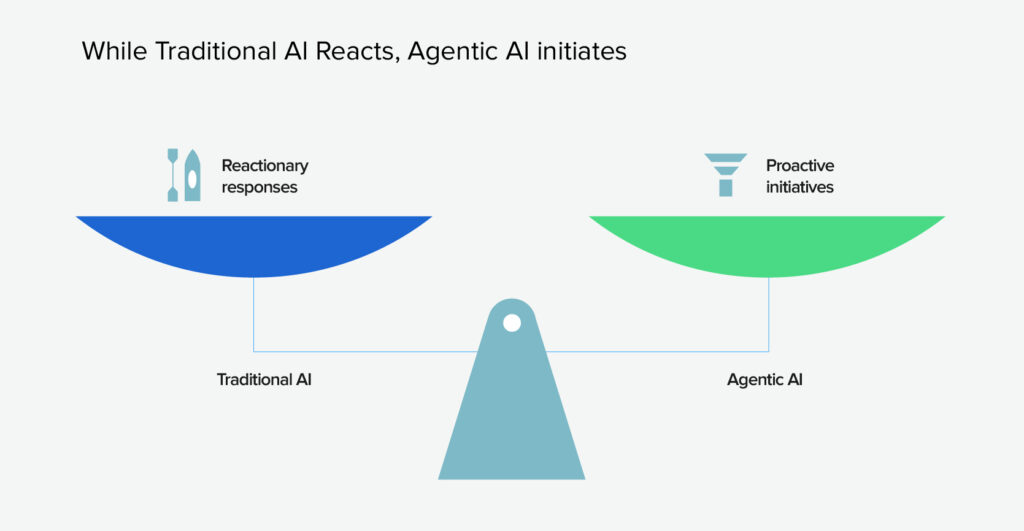
Here’s where the difference shows:
1. More than RPA
RPA bots are great at doing exactly what they’re told. They follow rules, move data, and repeat tasks at scale. But they break when the environment changes.
AI agents are built to adapt. An RPA bot may retrieve appointment data nightly. An AI agent could monitor cancellations as they occur, adjust the schedule, and notify patients automatically, eliminating the need for a manual trigger. It’s automation that reacts, not just repeats.
2. Not just a chatbot
Chatbots answer questions. Agents manage outcomes.
A chatbot might confirm your appointment. An AI agent could handle the entire referral – read your chart, match you with the right provider, book the visit, and coordinate follow-up. It doesn’t just chat–it moves things forward, based on real context.
3. Built for continuity
Most AI tools are designed for isolated steps. AI agents are designed to manage an entire workflow, from start to finish.
Take a patient moving from inpatient care to home monitoring. A traditional system might automate one step, such as generating discharge notes. An agent can follow the entire journey, coordinating handoffs, tracking progress, and escalating when needed. It carries context throughout.
What’s Next for Agentic AI in Healthcare
As agent-based systems mature, we can expect to see significant changes in how healthcare is delivered and supported. Here are the trends that matter from a development and deployment standpoint:
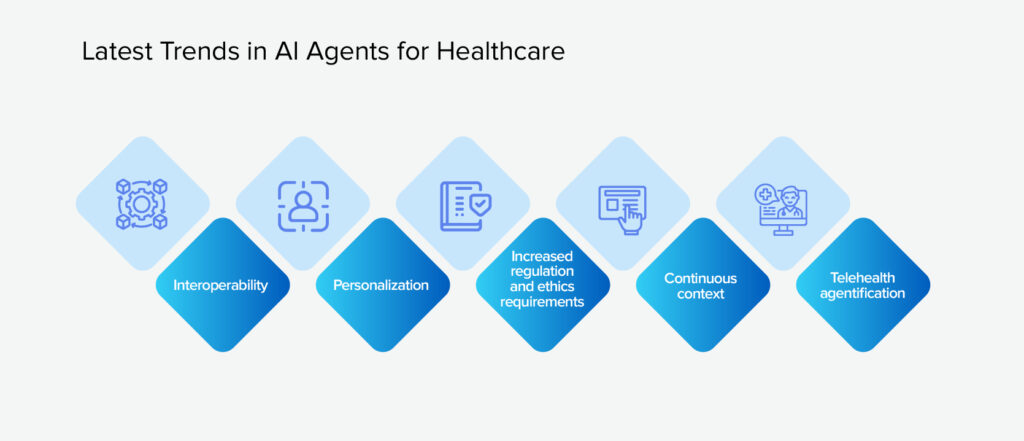
Interoperability won’t be optional
Agents will need to work across fragmented systems – different EHRs, data formats, legacy infrastructure. That means genuine interoperability, not just APIs that appear well in a slide deck. FHIR, HL7, and clean, well-documented interfaces are critical. If an agent can’t move data safely and predictably across systems, it won’t scale.
Real-world data will drive personalization
As access to genomic, lifestyle, and biometric data expands, agents will be expected to deliver context-aware outputs. Whether it’s adjusting treatment recommendations or surfacing early warnings, personalization has to go beyond demographics. That puts pressure on data pipelines, model training, and privacy-preserving mechanisms.
Regulation and ethics will shape what we can build
More autonomy means higher stakes. As agents assume more decision-making responsibilities (even in limited scopes), there will be increased scrutiny around explainability, auditability, and accountability. Developers will need to build with policy in mind – not just functionality. Expect stronger governance, both from regulators and internal review boards.
Agent + IoT = continuous context
The real power of agentic AI will show up when it’s paired with real-time streams from wearables, monitors, and ambient sensors. But it’s not just about data capture – it’s about turning that data into meaningful, time-sensitive actions. This requires agents that can run lightweight logic, escalate when needed, and stay silent when not.
Telehealth will rely on agents to scale
As virtual care becomes a permanent fixture, agents will take on more of the behind-the-scenes work – including triage, documentation, follow-ups, and even nudges to ensure care plan adherence. It’s not about replacing clinicians. It’s about making remote care workflows smoother, faster, and more consistent at scale.
Conclusion
AI agents aren’t about replacing people – they’re about making systems less painful to work with. Across healthcare, they’re already helping reduce documentation burden, speed up diagnostics, cut administrative overhead, and make patient communication more consistent. The most effective ones don’t call attention to themselves – they simply do their job, quietly, within the workflow.
As the technology matures, the focus will shift from building smarter agents to building more useful ones – agents that are interoperable, predictable, and trustworthy enough to scale effectively. That’s not just an engineering challenge – it’s a design and deployment challenge too.
If you’re working in healthcare and thinking about automation, the question isn’t whether to use AI agents. It’s where they’ll take pressure off your teams without getting in their way. And that’s where the work starts.
At Svitla Systems, we help healthcare organizations design and implement AI-powered systems that work reliably in complex environments. Whether you're exploring automation, building a custom agent, or planning large-scale integration, our team is here to help.
Ready to build AI that fits your workflow? Contact us to start the conversation.

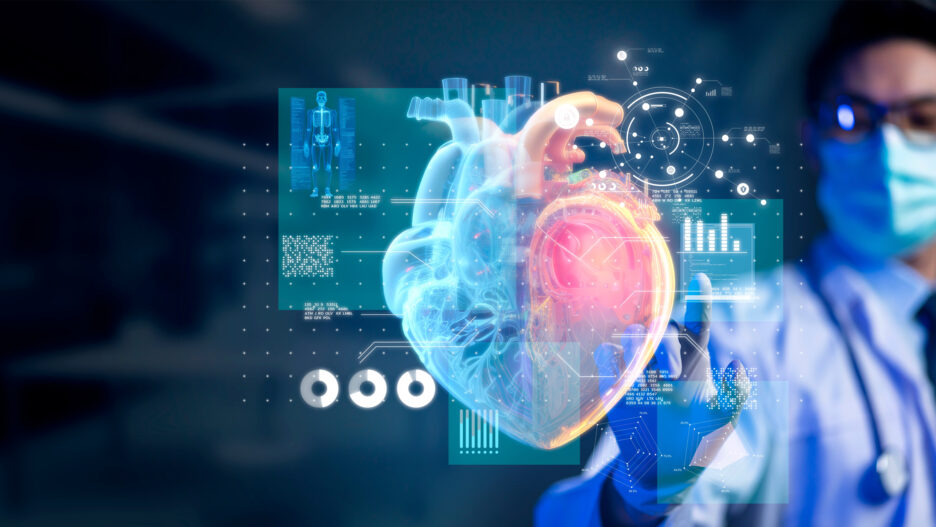

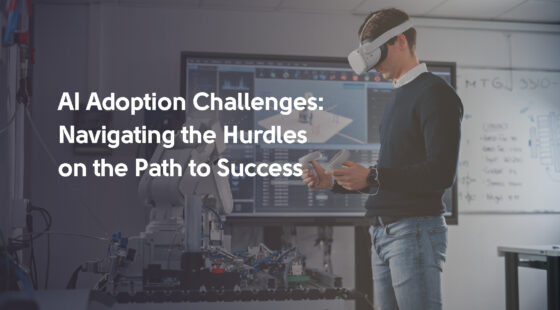
![[Blog cover] AI in manufacturing](https://svitla.com/wp-content/uploads/2025/05/Blog-cover-AI-in-manufacturing-560x310.jpg)
